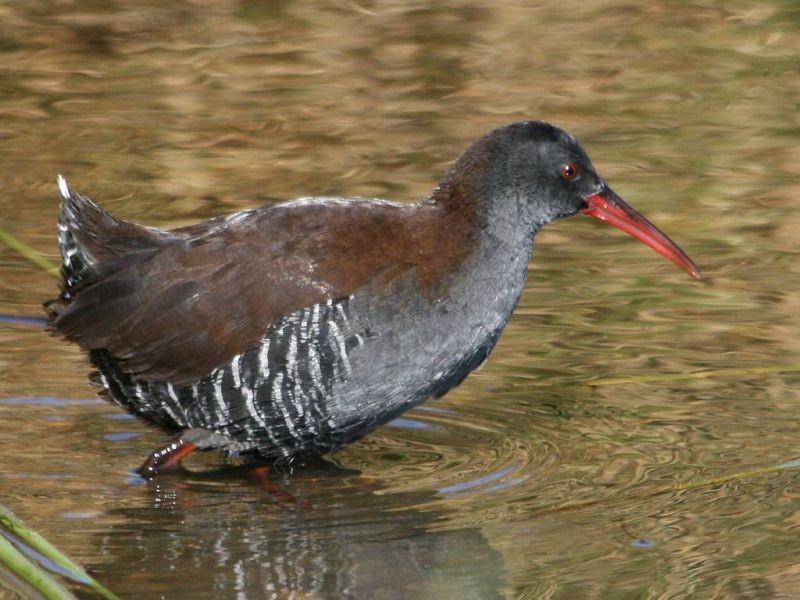African Rail
A species of Greater Rails, Also known as Cape Rail Scientific name : Rallus caerulescens Genus : Greater Rails
African Rail, A species of Greater Rails
Also known as:
Cape Rail
Botanical name: Rallus caerulescens
Genus: Greater Rails
Content
Description General Info
 Photo By Alan Manson , used under CC-BY-SA-2.0 /Cropped and compressed from original
Photo By Alan Manson , used under CC-BY-SA-2.0 /Cropped and compressed from original Description
The African rail (Rallus caerulescens) is a small wetland bird of the rail family. Its breeding habitat is marshes and reedbeds across eastern and southern Africa from Ethiopia to South Africa. Many birds are permanent residents, but some undertake seasonal movements in response to the availability of wetland. Adults are 28–30 cm long, and have mainly brown upperparts and blue-grey underparts, with black-and-white barring on the flanks and undertail. This is the only Rallus species with a plain back. The body is flattened laterally to allow easier passage through the reeds. They have long toes, a short tail and a long slim dull red bill. The legs are red. The African rail nests in a dry location in marsh vegetation, both sexes building the cup nest. The typical clutch is 2–6 heavily spotted creamy-white eggs, which are incubated by both sexes for about 20 days to hatching Immature birds are similar to the adults, but the blue-grey is replaced by buff. The precocial downy chicks are black, as with all rails. These birds probe with their bill in mud or shallow water, also picking up food by sight. They mainly eat insects, crabs and other small aquatic animals. African rails are secretive in the breeding season, but are easier to see than many other rail species, especially in the morning. They are noisy birds, with a trilled whistled treee-tee-tee-tee-tee call. 
Size
28 cm
Nest Placement
Ground
Feeding Habits
African Rail consumes a varied diet including aquatic insects, larvae, worms, crabs, spiders, small fish, frogs, seeds, and occasionally carrion. It forages by probing mud or vegetation in wet environments, often feeding from water surfaces at dawn and dusk. Uniquely, african Rail may climb reeds, suggesting adaptation for diverse foraging.
Habitat
The habitat of african Rail predominantly includes reedbeds and dense vegetation within permanent and temporary wetlands such as swamps, marshes, and areas adjacent to lakes, pools, rivers, and streams. These birds adapt to brackish conditions and during breeding, they expand into inundated grasslands and sedge meadows. African Rail often occupies wet agricultural fields like paddy fields and is also found in secondary growth along rivers. They prefer habitats that are shallowly flooded with areas of mud and floating vegetation that support their foraging activities.
Dite type
Omnivorous
General Info
Feeding Habits
Bird food type
Species Status
Not globally threatened.